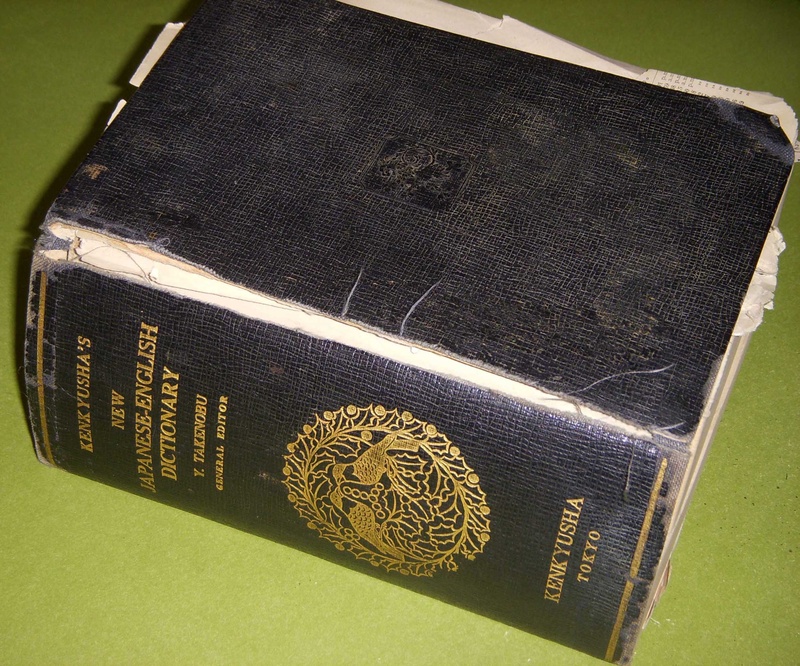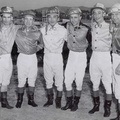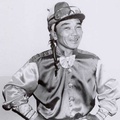For years I wanted to compile a list of Japanese American words and phrases. I am beginning a list for this article with words that, for the most part, came down to us from the Issei generation. I am not talking about standard Japanese terms, such as shoyu (soy sauce) or urusai (irritatingly noisy), which most Nikkei say or understand, because they have the same meaning in Japan today. My focus is on words or expressions that have become uniquely Japanese American for reasons that I explain below.
I should note that I am using italics for standard Japanese words, except those that are likely familiar to most readers. I am not italicizing my Nikkei terms nor am I using macrons because I do not feel that they are part of Japanese American parlance. A Kibei lady once told me that she could distinguish between a native Japanese speaker and a Nikkei speaking Japanese by the pronunciation of long and short vowel sounds and where they place the accent in words such as ame (rain) and ame (candy).
What interest me most are those Japanese words that Nikkei use but are either no longer used in Japan or their definition has changed. Languages everywhere evolve but for the Issei some words and phrases froze in time. That is why Japanese nationals are prone to stating that the way Nikkei speak Japanese is old-fashioned. Probably the best example is benjo, for restroom. The word “benjo” is no longer used in Japan; it would be like saying “outhouse.” I was actually told that the word is not only antiquated, but considered quite vulgar in Japan.
The Issei lexicon also reflects their intermingling with immigrants from other prefectures of Japan (with their distinct dialects) as well as with immigrants from other countries. This was particularly true in Hawaii where words from different cultures got mixed together and made their way to the mainland.
My list includes Japanese words that the Issei applied to objects that they encountered for the first time upon settling in the United States, and certain English words that the Issei pronounced with a Japanese accent. There are also phrases concocted by combining Japanese and English.
I did not include some Japanese terms and phrases—even though they may have special meaning among Japanese Americans—if those words are still used in Japan with roughly the same definition. Such words include gaman (which to Japanese Americans conveys the inner strength and perseverance needed to endure being a racial minority in America) and shikata ga nai (“it cannot be helped,” which among Japanese Americans is applied almost exclusively to the World War II exclusion and incarceration experience).
Another word that comes to mind is koden (a monetary bereavement gift). The practice of koden may not be exactly the same in Japan; it may even differ among Nikkei. A subject that comes up often among Japanese Americans is the giving of postage stamps as okaeshi (a return gift sent to the giver of koden), which I think is a relatively common practice in Southern California. I know that it is not done in Japan, and I was told that in Hawaii stamps are not sent to people who give koden. But I do not know about other areas.
So here is my list. It is not a long one and interestingly half of the words are related to food. Most of the words and phrases were uttered by my Issei grandparents. I learned the others from Nikkei friends or read about them. To emphasize a word’s Japanese American uniqueness, I included the modern, standard Japanese equivalent where possible.
Abunai kusa
In his book Country Voices (1987), David Mas Masumoto writes about how his Issei grandmother used the phrase “abunai kusa” when referring to Johnson grass. In the agricultural industry, Johnson grass is classified as a noxious weed, meaning that it is very difficult to eradicate. Abunai is the Japanese word for “dangerous,” and kusa means “grass.”
Bakatare
Fool or idiot. Standard Japanese: bakayarō. I have read that bakatare comes from the Hiroshima dialect. Because Hiroshima was the number one imin ken (immigrant-producing prefecture), in Hawaii and many other areas Issei from Hiroshima outnumbered Japanese immigrants from other prefectures. Consequently, some Hiroshima idioms were adopted by entire Nikkei communities. Ben Hamamoto’s article “A Look at the Emigration of Identity from Japan to America” supports this assertion.
Bambai
Both sets of my grandparents (who emigrated from different parts of Japan and settled in different parts of California) would say “bambai” for “before long” or “eventually.” My mother and I often wondered if bambai was a Japanese word, a prefectural dialect, or something else. My mother believed that bambai could have been derived from the English phrase “by and by.”
Benjo
Restroom or toilet. Standard Japanese: toire or otearai.
Chamen
Chow mein. Standard Japanese: sara udon.
China meshi
Chinese food or Chinese restaurant. Standard Japanese: chūka ryōri.
Hadaka pakku
Literally “naked pack,” a farming term. Before World War II, farmers individually wrapped tomatoes, cantaloupes, apples, and other fresh produce in paper, usually with a decorative label, as they packed them into wooden crates for shipping. When fruit or vegetables were not wrapped in paper, the Issei called it a hadaka pakku. Hadaka is the Japanese word for “naked,” and pakku is “pack” pronounced with a Japanese accent.
Hakase
Old Japanese term for a holder of a doctorate degree. Standard Japanese: hakushi.
Hapa/Happa
A child of a Nikkei parent and a non-Nikkei parent. Although regarded as a somewhat pejorative term in the past, it is now embraced, especially by the Yonsei generation, and is widely used and accepted in the Japanese American community. According to the Encyclopedia of Japanese American History, Updated Edition (2001), the term is believed to have originated in Hawaii from the pidgin term hapa-haole, literally meaning “half white.”
Mikan
Tangerine. This is an example of the Issei applying a Japanese word with a specific meaning to similar objects encountered in America. My grandmother referred to all tangerine varieties as mikan. In Japan, a mikan is a specific cultivar known in English as a mandarin orange or Satsuma tangerine (Citrus unshū). The standard Japanese word for tangerine is ponkan.
Mishin
Automobile. Literally “machine” pronounced with a Japanese accent. In the United States during the early twentieth century, it was not uncommon for an automobile to be referred to as a machine. Thus the Issei called it mishin. It was much easier than saying “a-to-mo-bi-ru”! Standard Japanese: kuruma or jidōsha. In modern Japanese, “machine” is pronounced “mashin,” as in mashinyu (マシン油 machine oil). In Japan today, mishin (ミシン) refers to a sewing machine.
Napa/Nappa
Chinese cabbage (Brassica campestris). Standard Japanese: hakusai. In modern Japanese, nappa refers to “greens” in general, that is, all “leaf vegetables.” Like the word “happa,” napa was originally spelled with two p’s. It is believed that the change in spelling reflects the difficulty that younger generations of Japanese Americans and non-Nikkei have in pronouncing the double consonants.
Okazu
A one-pot meal, stewed or stir-fried, consisting of small bits of meat and large portions of seasonal vegetables and tofu. In standard Japanese, okazu refers to side dishes that accompany the main entrée, and appetizers served with alcoholic beverages at an izakaya (pub or bar).
Orai
Alright. Literally “alright” pronounced with a Japanese accent. Used like the standard Japanese word daijōbu.
Pakkai
Originally spareribs cut into smaller pieces and prepared in sweet and sour or “sato-shoyu” sauce with bell peppers and pineapple. The dish is believed to have originated in Hawaii. Among many Japanese Americans, pakkai is commonly used to refer to sweet and sour pork (standard Japanese: su-buta).
Sato-shoyu
When I was growing up, our closest family friends were of Okinawan descent. They referred to teriyaki as “sato-shoyu.” I loved their sato-shoyu pork! Satō is the Japanese word for sugar. Historically, in Japan teriyaki referred specifically to fish grilled with shoyu.
Uri
As in the case of mikan, my grandmother used the word “uri” when talking about melons in general. In Japan, melons such as cantaloupe and honeydew, which were introduced after the Second World War, are called meron (メロン). Uri, in Japan, is a specific gourd-like pickling melon (Cucumis melo var. conomon) used in the making of tsukemono.
I hope that readers will contribute additional words and phrases by posting comments at the end of this article. And I invite anyone to correct any of my assumptions that may be incorrect or share perceptions that may differ from mine.
© 2017 Tim Asamen






